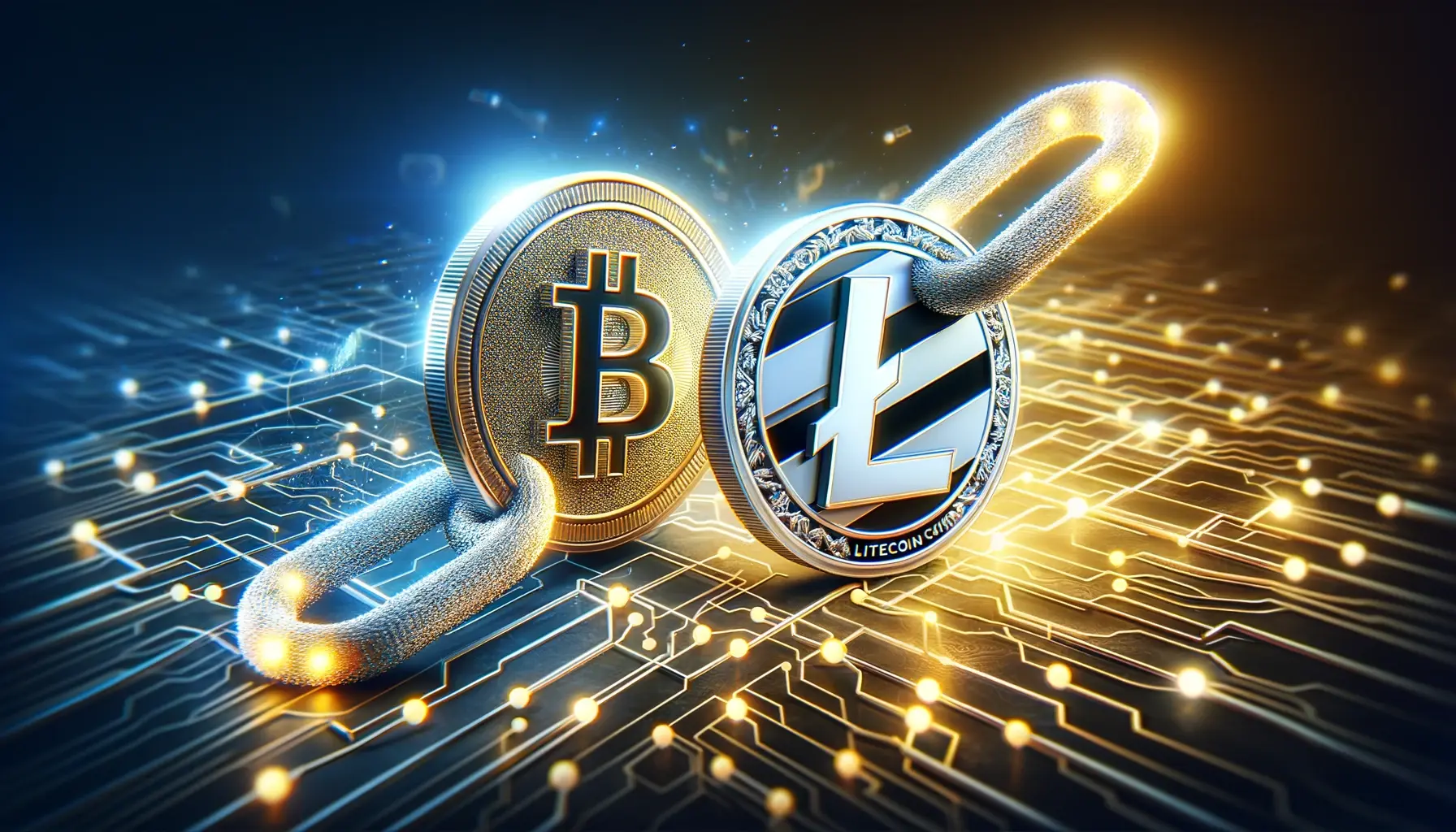Linking the Chains: Bitcoin and Litecoin Interoperability

The financial landscape has been reshaped by the emergence of cryptocurrencies, ushering in an era of decentralized digital assets characterized by security, transparency, and global accessibility. Bitcoin and Litecoin, pioneering cryptocurrencies, have been instrumental in advancing this revolutionary technology. Visit Immediate Vortex site immediately, if you are interested in learning more about the art of investing.
The Importance of Interoperability
While cryptocurrencies have gained widespread adoption, they often exist within isolated ecosystems. Achieving interoperability between different blockchain networks is becoming increasingly crucial to unlock the full potential of these digital assets.
Overview of Bitcoin and Litecoin
Bitcoin, created by the pseudonymous Satoshi Nakamoto in 2009, pioneered the world of cryptocurrencies. It serves as a store of value and digital gold, with a limited supply of 21 million coins. Litecoin, introduced by Charlie Lee in 2011, is often referred to as “silver” to Bitcoin’s “gold” and emphasizes faster transaction speeds.
Understanding Interoperability
Definition and Significance
Interoperability in the context of cryptocurrencies refers to the ability of different blockchain networks to communicate and share data seamlessly. It enables cross-chain transactions, data transfer, and smart contract execution, opening up a world of possibilities.
The Challenges of Isolation in the Crypto Ecosystem
Most cryptocurrencies operate in isolation, limiting their utility and potential. Lack of interoperability hinders the development of a cohesive crypto ecosystem, causing inefficiencies and missed opportunities.
The Need for Cross-Chain Communication
The crypto community recognizes the importance of enabling cross-chain communication to address these challenges. Interoperability solutions aim to bridge the gap between blockchain networks, promoting collaboration and innovation.
Bitcoin and Litecoin: A Comparative Analysis
Brief History and Evolution
Bitcoin, the first cryptocurrency, introduced the concept of decentralized digital currency. Litecoin emerged as one of its early forks, building on Bitcoin’s success with several technical enhancements.
Technical Differences and Similarities
Bitcoin and Litecoin share fundamental similarities, such as proof-of-work consensus mechanisms, but also have key differences. Litecoin features faster block generation times and a different hashing algorithm (Scrypt) compared to Bitcoin’s SHA-256.
Market Position and Use Cases
Bitcoin has cemented its position as digital gold and a store of value, while Litecoin emphasizes faster transaction confirmation times, making it suitable for everyday transactions. Understanding these distinctions is essential for exploring interoperability between the two.
The Importance of Bitcoin and Litecoin Interoperability
Facilitating Cross-Chain Transactions
Interoperability between Bitcoin and Litecoin would allow users to execute cross-chain transactions seamlessly. This means users could send Bitcoin to a Litecoin address or vice versa, expanding the utility of both cryptocurrencies.
Enhancing Scalability and Speed
Bitcoin faces scalability challenges, resulting in high transaction fees and slower confirmation times during network congestion. Interoperability with Litecoin could help alleviate these issues by offloading some transactions to the Litecoin network, which features faster block confirmations.
Enabling Smart Contracts and DeFi
The ability to execute smart contracts and participate in decentralized finance (DeFi) is a significant advantage of Ethereum and other blockchain platforms. Interoperability would allow Bitcoin and Litecoin users to access DeFi platforms and leverage smart contracts seamlessly.
Exploring Current Efforts in Interoperability
Atomic Swaps: A Pioneering Solution
Atomic swaps are trustless, cross-chain swaps that enable users to exchange one cryptocurrency for another without the need for intermediaries. Several projects and wallets have implemented atomic swap functionality between Bitcoin and Litecoin.
Lightning Network Integration
The Lightning Network is a second-layer scaling solution designed to facilitate faster and cheaper Bitcoin transactions. Integrating Litecoin into the Lightning Network can further enhance cross-chain payments and micropayments.
Cross-Chain Bridges and Wrapped Tokens
Cross-chain bridges and wrapped tokens are emerging solutions that aim to connect disparate blockchain networks. These technologies could enable Bitcoin and Litecoin to interact more closely and share liquidity.
Future Prospects and Innovations
Layer 2 Solutions for Interoperability
Layer 2 solutions, like the Lightning Network, are evolving rapidly. Innovations in this space could pave the way for even more efficient cross-chain interoperability, making Bitcoin and Litecoin integration seamless.
Token Standards and Cross-Chain Standards
The development of token standards and cross-chain standards will be pivotal in achieving broader interoperability across the crypto ecosystem. Industry collaboration is crucial in setting these standards.
The Role of Decentralized Exchanges (DEXs)
Decentralized exchanges play a crucial role in facilitating cross-chain swaps. As DEXs continue to evolve and expand, they will contribute to the growth of Bitcoin and Litecoin interoperability.
Challenges and Risks
Security Concerns and Vulnerabilities
Interoperability introduces security challenges, such as potential smart contract vulnerabilities and the risk of double-spending. Robust security measures and audits are essential to mitigate these risks.
Regulatory Hurdles
Interoperability may face regulatory scrutiny, especially concerning anti-money laundering (AML) and know-your-customer (KYC) requirements. Compliance with evolving regulations will be crucial for widespread adoption.
The Quest for Mass Adoption
Achieving mass adoption of Bitcoin and Litecoin interoperability requires educating users, improving user interfaces, and ensuring a seamless experience. Overcoming user resistance and inertia will be a significant challenge.
Conclusion
In conclusion, Bitcoin and Litecoin interoperability is poised to revolutionize the cryptocurrency landscape, offering cross-chain transactions, scalability improvements, and access to smart contracts and DeFi. While current solutions like atomic swaps and Lightning Network integration show promise, the road ahead involves addressing security concerns, regulatory challenges, and fostering mass adoption. As cryptocurrencies continue to evolve, achieving a unified crypto ecosystem through interoperability represents a pivotal step towards realizing their full potential and ushering in a new era of decentralized finance and innovation.
